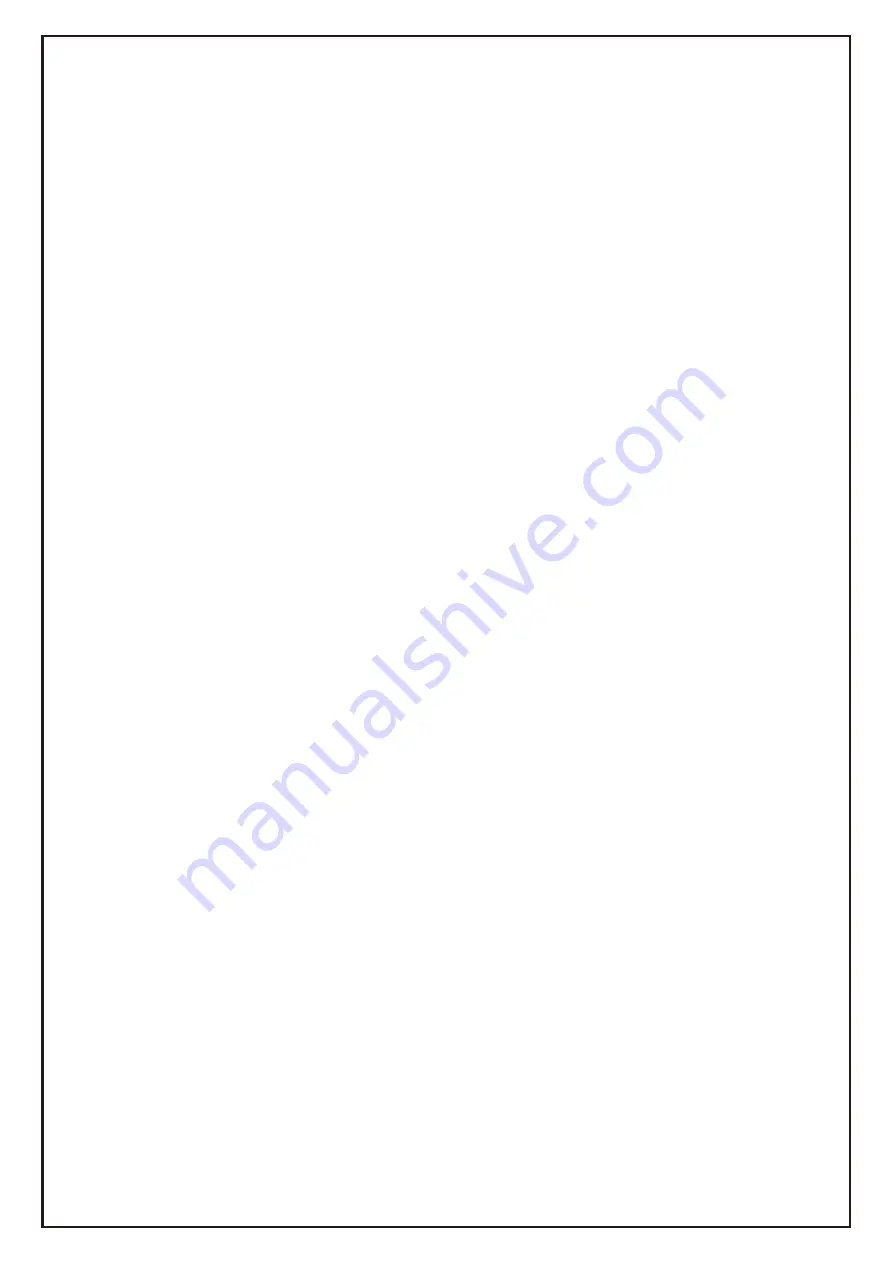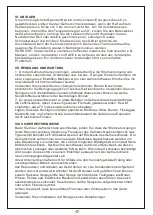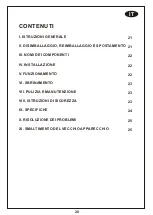
5
VII.CLEANING AND MAINTENANCE
1.To clean the freezer, disconnect power supply and remove foods, drawers etc. Use
a solution mixed with 2 spoons of baking soda per litre of warm water to clean the
interior. Then wipe it clean with fresh water. Never use acids, chemical thinner,
gasoline, benzene or the like for cleaning any part of the freezer. Never use oiling
water and benzene to clean plastic parts because they may deform or damage the
plastic parts.
2.Too much foods or a too large container in the freezer will affect cold air circulation,
so some free space must be left. lt is recommended that about 70% storage volume is
loaded. Do not store volatile and or explosive materials such as ethers, gasoline,
liquefied petroleum gas, adhesives etc. in the freezer. Otherwise there will be a
danger of explosion caused by electric sparks.
VIII. SAFETY INSTRUCTIONS
Before plugging your freezer in check that the electric supply in your house must
comply with the rating (voltage, frequency) of the freezer, the rating plate is usually on
the back of the freezer. The freezer should always be plugged in its own individual
electrical outlet to prevent overload, which could cause a possible fire hazard from
overheating wires. Do not splash water on the freezer as this will cause electrical
leakage or failure. lf the power cord becomes damaged, ask on electrician to replace
it immediately. The freezer must be properly earthed.
Our corporation is not responsible for any accident caused by improper earthing or
improper operation.
Any repairs and work on the appliance should only be carried out by the customer
service department. as unauthorized work could prove highly dangerous for the user.
Do not store explosives or sprays using combustible propellants such as butane,
propane, pentane etc. In the appliance, Electrical components might cause leaking
gas to ignite. You may identify such sprays by the printed contents or a flame symbol.
Do not allow naked flames or ignition sources to enter the appliance.
Do not use steam cleaners for defrosting and cleaning.
Do not use mechanical devices or other means to accelerate the defrosting process,
other than those recommended by the manufacturer.
Do not damage the refrigerant circuit.
Do not use electrical appliances inside the food storage compartments of appliance,
unless they are of the type recommended by the manufacturer.
Do not damage the refrigerant circuit.
Do not use electrical appliances inside the food storage compartments of appliance,
unless they are of the type recommended by the manufacturer.
Do not store explosive substances such as aerosol cans with flammable propellant in
this appliance.
VI. DEFROSTING
For the most efficient operation and minimum energy consumption, defrost the
freezer when the frost on the evaporator is excessive 3 to 4 mm thick. To start
defrosting, turn the temperature control to "0",unplug the freezer, remove the food
and drawers. After the frost or ice has melted, discard the melted water and dry up
the interior of freezer. Then the freezer can be restarted by a turning its thermostat
to the desired setting.
CAUTION:
Never use any sharp of metallic instruments (e.g. knives) to remove
frost/ice from the evaporator as this will damage the evaporator. A punctured
evaporator will cause serious problems.






































